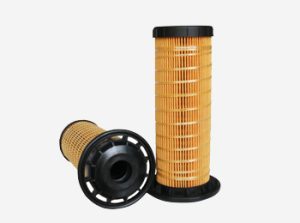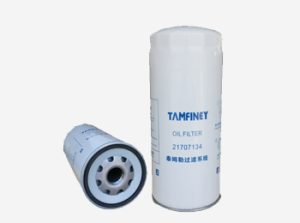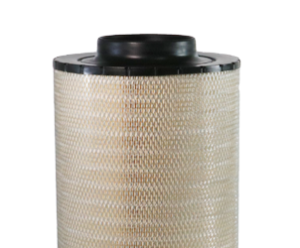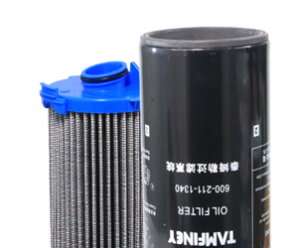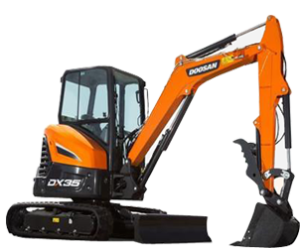
Oil Filter Manufacturers
Lube oil is vital for a running engine; it must have the right viscosity and be changed on a regular basis. As the oil passes through your engine, it picks up debris and particles. If left unchecked, the debris will cause serious damage to your engine. The solution is an oil filter – lube oil filter does exactly what the name implies: it filters the oil and removes particulates before they have a chance to damage engine components. You also can check with oil filter manufacturers for more.
Diesel engine oil filter is a key component in lubrication system. When the oil flows through the engine, it will pick up debris, metal particles and other pollutants. Over time, the oil will become more and more dirty and start to lose the ability to clean and lubricate the engine. The oil filter is mainly used to clean the oil. Although the location of the oil filter elements will vary by different trucks, they are mainly located at the front top of the engine or under the engine hood behind the air filter housing. Most internal filters are installed into a sealed base at the top of the engine.The more function is:
l Prevent oil oxidation. No matter how good or bad road conditions you drive, car oil will oxidize with time. This oxidation will add more pollutants to the oil and reduce its efficiency.
l Lubricate internal oil filter parts to help cool the engine by transferring heat and prevent engine overheating. Dirt and impurities accumulated in the oil will wear the engine and reduce the thermal conductivity.
l Extend engine life. The engine requires internal circulation of clean oil in order to achieve maximum performance. A good oil filter prevents dirt and other debris from entering the engine.
l Save you a lot of money in the long run.
l Keep dirt particles such as metal chips and dirt, as well as dirt particles of separator or centrifuge, and discharge pollutant particles from lubricating oil.
Types of Oil Filter
There are different types of oil filters based on different classification method. You can find by the oil filter cross reference or lookup by vehicle:
Oil filter manufacturers like to classify by structure:
This features a self-contained housing case with a component that’s replaceable. There are different types of media available, with pleated paper being the most economical. It contains no metal and can be recycled or disposed of easier than spin-ons.
Canister oil filter, also called spin on oil filter. Spin-on filters have the filter element and casing built into a single unit which should be replaced every time you change your oil.
Classification by filtration principle:
Mechanical oil filter, mainly filter paper filtration. They need to be replaced regularly, and the filter paper is easily blocked by pollutants. The more dirt on the filter paper, the less oil will pass through. When it is completely blocked, the oil will not pass through. 111
Oil filter magnet, Since most of the impurities and debris in the oil are small metal parts, the magnet filter uses magnets or electromagnets to pull them out of the oil when the oil enters the engine, which makes it as easy to clean the oil filter as to remove the pollutants on the magnets. Although this makes it easy to change oil, the filter components can have some harmful effects.
Centrifugal oil filter, When you rotate a device, you generate centrifugal force. The design of the oil filter with centrifugal force makes the oil rotate in the filter housing at high speed and flow into the drum rotor. It has two nozzles that allow the oil to settle. Then the drum begins to rotate. Oil is easy to pass through the motor, but contaminants can get stuck. Pollutants stick to the shell wall, and the oil can enter the next step. This method is effective in purifying the car oil, but you still need to clean the car shell regularly to prevent the accumulation of pollutants.
Classification by the arrangement in the lubrication system, some oil filter suppliers also classified by the oil filter price for easy:
Full flow oil filter, The full flow oil filter, also known as the primary oil filter, is connected in series between the oil pump of the internal combustion engine and the main lubricating oil passage. Its purpose is to filter out the particles with particle size more than 40 μ m in the lubricating system oil. The oil circulating in the lubricating system of internal combustion engine should be filtered through it. Generally, the full flow oil filter element can filter and circulate the oil in the oil pan three times in a minute, so as to better protect the friction pair surface of internal combustion engine parts and reduce abrasive wear.
Bypass Oil Filter, The shunt type oil filter element is also called by-pass oil filter element or fine filter, which is connected in parallel with the lubricating oil passage of the internal combustion engine. A certain size orifice is designed on the filter base to limit the oil flow through the oil filter element, so that part of the oil flows back to the oil pan after filtering through the split type oil filter element. The purpose is to filter out the small particles which are not filtered out by the full flow oil filter element and affect the wear of the internal combustion engine, so as to control the pollution level of the internal combustion engine, and then reduce the wear of the internal combustion engine. This kind of engine oil can only be filtered once in about 10 minutes. The oil flow rate of the split flow oil filter element is relatively small, which allows a large flow resistance, but the filtering accuracy is high, generally up to 5-10 μm. When the split flow oil filter element is used, the wear amount of various parts of the internal combustion engine is obviously reduced.
Working Principle
The filtration principle of oil filter element can be divided into three categories: mechanical separation, centrifugal separation and magnetic adsorption. Oil filter company associates with media to provide appropriate oil filter quality.
Mechanical separation can be divided into pure mechanical separation, overhead separation and adsorption separation. In pure mechanical separation, mesh filtration is common. There are small holes on the surface of the filter media. Solid particles in the oil, which are larger than the small holes, are blocked on the outer surface of the filter material. Overhead separation refers to that at first, there are one or several small particles attached to the inner wall of the filter material hole whose size is larger than them, so that the hole size becomes smaller, and later particles pile up because they cannot pass through, forming an overhead phenomenon, so that the size of the filtered particles is smaller than the hole size.
Because most of the particles in the engine oil start irregularly, the phenomenon of overhead is easy to form. There are also colloidal substances in the oil, which often adhere to the surface of the filter media or the inner wall of the hole, which is adsorption separation.
The actual filtration function is not the function of a single principle, but the combination of the above several principles, which also explains why the filter with a nominal pore size of 50μm can have a certain filtration capacity for particles of 20μm or smaller.
Centrifugal separation is to make the oil pass through a high-speed rotating rotor, so that the impurities are thrown to the inner wall of the rotor by centrifugal force, so as to separate from the oil.
Magnetic adsorption is the use of permanent magnets to absorb the iron particles in the engine oil, so as to prevent them from circulating back and forth in the engine oil, thus endangering the parts.
Our Features
1. Total of the oil filters undergo an SAE test to satisfy with the performance testing
Rated flow: at specified viscosity and pressure drop
Pressure drop: in a fluid flow system, the static pressure difference between two specified points at any given time.
Damage pressure and Pulse fatigue test: the maximum internal liquid pressure that the assembly can bear.
Original resistance: the pressure difference between the inlet and outlet of the new assembly at the rated flow.
Flow resistance: the pressure difference before and after the filter under a certain flow rate. This pressure difference is the resistance of the filter and also the pressure loss value. Its value should be as small as possible. It is generally required that the original resistance of the full flow filter when passing through the rated flow shall not be greater than 0.5kg/cm2 or 30% of the opening pressure of the oil filter bypass valve.
Collapsing strength, steel shell and screw cap resists internal / external forces along the radius
Contaminant Removal Characteristics of Full-Flow Oil Filters
Single Pass Particle Retention Capability Test
Inlet and Outlet Anti-Drain Valve Test
Relief Valve Performance
2. Reliable, durable and affordable media to protect the engine by the high performance oil filter.
3. Use an advanced synthetic fiber blend that is capable of removing oil contaminants with 99.6% efficiency which is perfect for high performance engines that demand a high oil flow rate.
4. Fully automatic side seam of filter media, accurately fold the seam at the joint. Avoid openings, cracks, or gaps in the filter to allow oil and particles to flow.
5. Check in our oil filter cross reference chart online by oil filter catalog. For more oil filter size and other part number, you can contract us directly.
Filtering Step
1) Engine’s oil pump pushes oil into the filter(which is sealed to your engine’s oil filter housing with a square-section round gasket)
2)Through a number of radial holes in the filter’s metal “trapping plate.” The pressure generated by that pump is enough to push an anti-drainback valve out of the way, at which point oil can enter the filter.
3)Once in the filter, the oil surrounds an element (which consists of a usually-metal center tube surrounded by media,sealed off by metal, plastic or PVC end-caps).
4)It passes through the pleated medium, through the holes in the center tube , and back up through the exit at the top of the filter.
Media
Cellulose filter media
Plant-based cellulose media, which blocks particles with an average particle size of 25 to 40 microns and removes up to 40% of the oil. The recommended replacement time for cellulose media is 3000 miles. The advantage is low price, better performance when used with heavy oil, and keeping its shape in high-pressure oil flow.
Although it can’t provide high filtration capacity of synthetic media, it allows higher flow. When the surface area of media reaches enough size, its filtration efficiency can still reach 99%. If filtration efficiency is your priority, you’d better use synthetic media.
Synthetic oil filter media
Synthetic media (can be made of nylon, glass or polyester) is best oil filter for synthetic oil, It is the most effective, and most high-quality oil filters have this type of filter media. Because the production scale of fiber is much smaller than that of large plant cellulose fiber. These fibers are tightly “crossed” together to collect smaller dirt particles while allowing higher oil flow and greater capacity and durability. The only disadvantage is that the manufacturing cost is higher, which will raise the price of oil filter.
The medium can effectively remove 50% of particles with a particle size range of 20 to 40 microns and 24% of particles with a particle size range of 6 to 10 microns. You can replace every 5000 to 7000 miles. The more advantages are:
Improved efficiency – efficiency describes the ability of a filter to capture contaminants. It is reported as a percentage, followed by a micron scale. For example, “99% at 20 microns.”. The larger the filter area is, the higher the percentage is.
Increased capacity – capacity is the amount of contaminant that a filter can hold while remaining effective. Although there is no industry standard capacity level similar to the above efficiency level, the full synthetic medium provides more capacity than the traditional medium. The smaller fibers in the synthetic media allow pollutants to stay in more space without limiting the oil flow.
Filters with reinforcements on the media can improve durability – hot oil will slowly degrade the resin that holds some of the media together. For example, add wire liner to bear the increased heat and longer drainage interval. This ensures that the oil remains in the filter after the engine is shut down, preventing dry start the next day.
Cellulose and synthetic blended media
Blend of cellulose and synthetic fiber reached the best state in price and performance. Particles as small as 20 microns will be gotten caught. When it is used with full synthetic oil, its efficiency can reach more than 99% and its mileage can reach 10000 miles. Many oil filter manufacturers are turning to this type of media to reduce costs while providing high filtration efficiency and general performance.
99% filtration at 50 microns is much worse than 99% at 20 microns. There are other factors, such as rating and absolute value, medium type, surface area and pleats quantity, which can help to determine the filter efficiency.
Micro glass filter media
Premium quality oil filter replacement has a metal media known as micro glass.
The microfiber is 10 times thinner than the cellulose medium. It can effectively deal with 20μm fragments, with an efficiency of 98%.
Another advantage of microglasses is that they have less resistance to oil flow and can travel 10000 miles before replacement. But the price is also the most expensive. This special glass medium is the most efficient and economical filter, which provides better protection for start-up, especially in cold weather. In addition, the glass medium does not absorb as much water as the cellulose medium.
Distinguishing method between non curing full adhesive paper and semi adhesive paper: Dropwise iodine liquor; If the filter paper turns black, it becomes semi adhesive paper. The filter paper remains unchanged or slightly changes, which is a better fully adhesive paper.
FAQ
The oil filter has different shapes and sizes, which must be adjusted correctly before being installed on the vehicle engine. Fortunately, they are online resources that you can use to help you find a compatible filter. Or find the cross reference in your old oil filter to put in our website. For our ordinary consumers, we can’t see the level of the internal workmanship of the filter for spin on filters. We can only judge through some skills:
1.Judge from the appearance details: a good machine filter must look good.
The filter element produced by famous company is not only good in material and workmanship, but also not careless in the treatment of appearance details
2.See whether the rubber ring of the filter has toughness and softness.
We can take off the rubber ring and knead it with our hands to feel the texture of the rubber ring. For a good oil filter, the rubber ring will be made of thick material, and it will feel soft when being pinched by hand to ensure the sealing around the oil inlet and outlet.
3.See if there is a Anti-drainback Valve structure inside
The Anti-drainback Valve is actually a rubber cup, a very simple component, but its function is very important. The valve is a device that can make the lubricating system store as much oil as possible after the vehicle is flamed out.
4.Put your finger into the inner wall of the filter, and judge whether it is fixed.
For a good spin-on filter, its filter element will be firmly fixed in the filter, and will not shift when bearing the oil pressure and vehicle turbulence, so as to ensure that the oil passes through the filter paper to complete the filtration.
5.Shake the filter vigorously and listen to whether there is noise.
A good oil filter has a better fixation of its filter element. When shaking, there will be no noise of parts interfering with each other.
Filtration accuracy, filtering out all particles > 30 um,
- Reduce particles entering the lubrication gap and causing wear (< 3 um – 30 UM)
- The oil flow meets the engine oil demand.
- Long replacement cycle, at least longer than the service life of oil (km, time
- The filtering accuracy meets the requirements of protecting the engine and reducing wear.
- Large ash capacity, suitable for harsh environment.
It can adapt to high oil temperature and corrosion.
- The lower the differential pressure is, the better it is when filtering the oil, so that the oil can pass smoothly.
It depends on different situation. We can divide the engine oil into four grades in quality:
Cheap (rubber valve hardened, short fiber, thin media)
Average (thicker, longer fibre media, better rubber seals and valves)
High quality (silicon or similar valves and seals, thick long fiber media)
Original quality, synthetic medium,Thicker steel, better rubber washers, and better media attachment to the housing.
Premium oil filters have many advantages over the cheaper counterparts, including:
Thicker base plate (standard thickness 155 inches) for consistent thread strength, easier thread engagement, positive internal element support, and consistent oil filter gasket compression.
Robust element supports are designed to resist all fluid types, vibrations and high and low temperatures without distortion under constant spring load pressure.
Heavy duty central pipe and can, able to withstand a wide range of flow and pressure.
High tech media and other technological improvements make the advanced filter more advantageous.
Even within the scope of “high quality,” there are differences. 99% efficiency at 50 microns and 99% efficiency at 21 microns. The most valuable area of synthetic materials is heavy equipment, which costs as much as $100000, while engine modifications may cost $20000 or more. If the engine is damaged, it will be extra cost
Yes, because it helps ensure your engine is lubricated with clean oil which can provide optimal engine performance. See your vehicle owner’s manual for the recommended oil change interval, or follow the oil life monitoring system, if equipped.
Yes, it’s important to use the recommended grade of oil for your equipmentfor the best protection and fuel mileage. Typically any truck filters can be used with any type of oil. Every major motor oil manufacturer says you do not need a special or different oil filter when using synthetic oil.
The original oil filter is manufactured according to the overall technical specifications of the car or equipment. The accessory materials and filter media are the best, with more efficient filtration, longer service life and more purified engine oil. The effect of replacement filter element is different according to the price and brand. According to the different quality requirements of customers, our manufactured filters should meet the needs of different markets. The thickness of the central tube, cover plate, shell, the fiber content in the filter paper and the selection of steel are total the decision factors. But our high quality grade filters are nearly achieve original quality.
Place a small magnet on the oil filter element, so that when there is dust in this part, it will be stuck because of the attraction of the magnet. Such a simple action can protect the engine from damage, and ensure that the oil burning is sufficient, so as to save oil. Or you can put the magnet on the bottom of the tank, the same thing.

